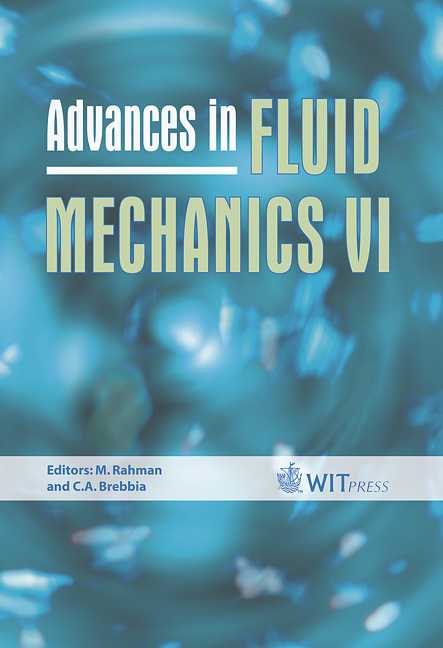Cavity Length And Re-entrant Jet In 2-D Sheet Cavitation
Price
Free (open access)
Transaction
Volume
52
Pages
10
Published
2006
Size
434 kb
Paper DOI
10.2495/AFM060341
Copyright
WIT Press
Author(s)
I. Castellani
Abstract
Some features of hydrodynamic cavitation have been investigated in this experimental study to understand the role of the re-entrant jet in the formation of sheet (or cloud) 2-D cavitation. Velocity profiles, frequency contents of the cavity, pressure coefficients and pressure pulses spectrum have been measured in isothermal conditions. Physical quantities of interest were found to be greatly affected by the rate of pressure increase. Flow separation, surge instability, hysteresis, rebounds, splashes, choking and re-entrant jets have been observed. A correlation has been found between the cavitation number and the cavity length. The frequency content was detected by a new method that produces a spectrum at high Strouhal numbers. A large band without a peak was observed for the highest frequencies, e.g. greater than 1000 Hz. The role of the re-entrant jet in breaking the cavity was not found to be as much important as it is currently believed. The present results, obtained through thousands of experiments, may be of interest to predict cavity formation. Keywords: cavitation, re-entrant jet, frequency content, laser measurements, pressure pulses, wall effects, choke, hysteresis, rebound, splash. 1 Introduction The present work originates from previous literature results about sheet-cloud 2-D cavitation, e.g. Astolfi et al. [8], Franc and Lauterborn [9], Lindau [12] and Sato and Shimojo [14], who discussed features such as periodicity, re-entrant jet, pressure gradient, rebound, wall effect and morfology. The experimental apparatus is described at length in Castellani [15, 16]. It comprises a high speed water tunnel, a centrifugal pump (120 l/min and 25 m maximum head) and a vacuum pump. The temperature was always kept constant at
Keywords
cavitation, re-entrant jet, frequency content, laser measurements, pressurepulses, wall effects, choke, hysteresis, rebound, splash.





